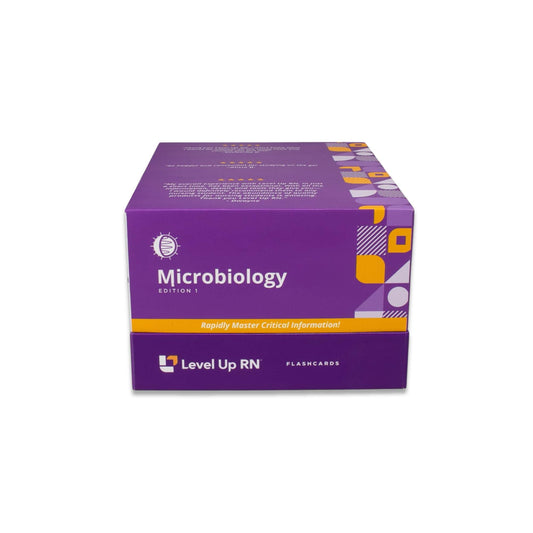Microbiology, part 56: Control of Growth - Antibiotics - Protein Synthesis Inhibitors
Antibiotics that inhibit protein synthesis. This includes aminoglycosides (e.g., gentamicin, neomycin, streptomycin), tetracyclines (e.g., doxycycline), macrolides (e.g., erythromycin, azithromycin), and lincosamides (e.g., clindamycin).
Quiz Questions
Protein synthesis inhibitors bind to 70S ribosomes in bacterial cells. True or false?
Protein synthesis inhibitors bind to 70S ribosomes in bacterial cells. True or false?
Which of the following protein synthesis inhibitors binds to the 30S subunit of the ribosome and causes misreading of the mRNA: aminoglycosides, tetracyclines, macrolides, or lincosamides?
Which of the following protein synthesis inhibitors binds to the 30S subunit of the ribosome and causes misreading of the mRNA: aminoglycosides, tetracyclines, macrolides, or lincosamides?
Which of the following protein synthesis inhibitors bind to the 50S subunit of the ribosomes: Aminoglycosides, tetracyclines, macrolides, or lincosamides? Select all that apply.
Which of the following protein synthesis inhibitors bind to the 50S subunit of the ribosomes: Aminoglycosides, tetracyclines, macrolides, or lincosamides? Select all that apply.
Full Transcript: Microbiology, part 56: Control of Growth - Antibiotics - Protein Synthesis Inhibitors
Full Transcript: Microbiology, part 56: Control of Growth - Antibiotics - Protein Synthesis Inhibitors
Hi, I'm Cathy with Level Up RN. In this video, I will be discussing antimicrobial drugs that work by inhibiting protein synthesis. And then at the end of the video, I'm going to give you guys a little quiz to test your understanding of some of the key facts I'll be covering. So be sure to stay for that. Protein synthesis inhibitors are antibiotics that target the 70S ribosomes in bacterial cells. So each 70S ribosome contains a 30S subunit and a 50S subunit. So the antibiotics that we're going to talk about in this video either bind to the 30S subunit or the 50S subunit and cause changes that prevent the translation of mRNA into proteins.
First up, we have aminoglycosides. Aminoglycosides bind to the 30S subunit of the ribosome, causing a structural change that makes the ribosome misread the mRNA. In turn, this causes the production of faulty proteins. Aminoglycosides are bactericidal and broad spectrum. So bactericidal means they kill the bacteria instead of just inhibiting their growth. And broad spectrum means that aminoglycosides are effective against a wide range of bacteria. Examples of aminoglycosides include gentamicin, neomycin, and streptomycin. Tetracyclines are another drug class that inhibit protein synthesis. Like aminoglycosides, tetracyclines bind to the 30S subunit of the ribosome. However, instead of causing misreading of the mRNA, tetracyclines block tRNA from binding to the ribosome during translation. And this, in turn, prevents protein synthesis. Tetracyclines are bacteriostatic, meaning they inhibit the growth of the bacteria, but don't kill the bacteria. And like aminoglycosides, tetracyclines are broad spectrum. An example of a tetracycline is doxycycline.
Next, we have macrolides. Macrolides bind to the 50S subunit of the ribosome and prevent the formation of peptide bonds between amino acids during translation. Macrolides are bacteriostatic and broad spectrum, and examples of macrolides include erythromycin, which makes me personally sick as a dog, as well as azithromycin. Lastly, we have lincosamides. Like macrolides, lincosamides bind to the 50S subunit of the ribosome and prevent peptide bond formation. So there are differences in exactly where they bind on the 50S subunit and exactly how they inhibit peptide bond formation. But chances are, you do not have to know those differences for your micro class. Lincosamides can either be bacteriostatic or bactericidal at high concentrations. And unlike macrolides, they are narrow spectrum. An example of a lincosamide is clindamycin.
All right, it's quiz time, and I have three questions for you.
Question number 1. Protein synthesis inhibitors bind to 70S ribosomes in bacterial cells. True or false?
The answer is...true.
Question number 2. Which protein synthesis inhibitor binds to the 30S subunit of the ribosome and causes misreading of the mRNA? A, aminoglycosides, B, tetracyclines, C, macrolides, or D, lincosamides?
The answer is...A, aminoglycosides.
And question number 3. Which protein synthesis inhibitors bind to the 50S subunit of the ribosomes? Select all that apply. A, aminoglycosides, B, tetracyclines, C, macrolides, and D, lincosamides?
The answer is...C, macrolides, and D, lincosamides.
All right. That's it for this video. I hope it was helpful. Take care and good luck with studying.


